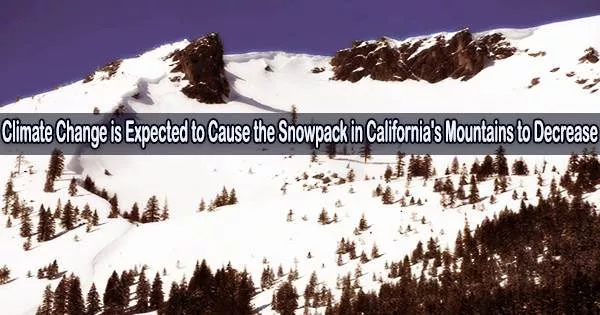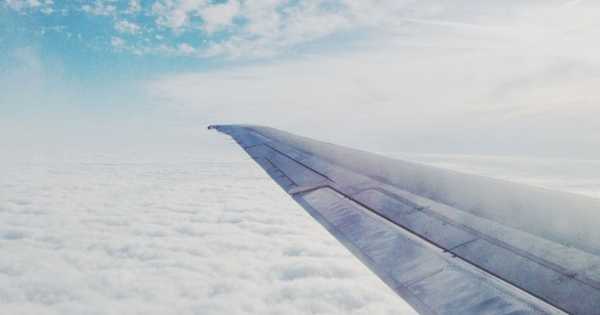One of the greatest snowpacks ever recorded in California’s Sierra Nevada was created by this winter’s severe storms, paired with an unusually high amount of snow at low mountain elevations.
However, as temperatures rise due to climate change in the coming years, such abundant snowfall at lower elevations is expected to become progressively rarer.
According to a research released this week, mountain snowlines in California have already started to rise and may do so even farther if nothing is done to limit the rate of global warming.
According to research, the Sierra Nevada and southern Cascade mountain ranges’ average snowlines could rise 1,300 to 1,600 feet between the 2050s and 2100s compared to a century earlier as a result of warming temperatures.
The research is published in the journal Climate Dynamics.
The shifting patterns of runoff will present significant issues for California’s water management as well as for the operation of dams that were built to capture and store snowmelt when increasing precipitation at lower elevations falls as rain rather than snow.
“Snowlines are rising,” said Alexander Gershunov, a research meteorologist who co-authored the study with other scientists at UC San Diego’s Scripps Institution of Oceanography.
“If we look towards the end of the century, the snow will be confined to much higher elevations in most years,” Gershunov said. “Low-elevation mountains will be more and more likely to be snow-free.”
Researchers came to the conclusion that unchecked global warming might cause California’s mountains to lose more than half of their seasonal snow cover after analyzing more than 70 years’ worth of snow data.
The research brings new insights about the shift to more rain and less snow, including watershed-level projections that could help show where vulnerabilities in water management may lie.
Michael Anderson
They said the average amount of snow from November through March in the northern Sierra could decrease by more than 70% by the second half of the century, while decreases of about 40% are likely in the higher mountains of the central Sierra and southern Sierra.
Similar findings from the research imply that heavy runoff during winter will result from significant increases in the amount of precipitation falling as rain.
“That will mean larger flows streaming from the mountains instead of melting off gradually, a trend that is already apparent and will complicate the work of dam managers,” Gershunov said.
“It becomes more challenging to balance the need for flood control that reservoirs provide as well as water retention,” Gershunov said. “We have to learn how to generate water resources from floodwater.”
The trends, he claimed, demonstrate, among other things, the necessity for California to step up efforts to collect and use floodwaters to replenish groundwater, a goal for the state’s water officials in order to prepare for more pronounced swings between periods of drought and periods of wet weather.
The study’s authors said even as average snowlines retreat, California will still get big snow years at times.
The researchers discovered that more snow will fall in the mountains as a result of atmospheric rivers, which are warmer and typically have higher snowlines than other winter storms as the world warms due to increased greenhouse gas levels. Additionally, some studies indicate that these storms will become stronger as temperatures rise and carry more water vapor.
“At the very high elevations, ironically, we’re getting more likely to have unprecedented snow accumulations, because specifically atmospheric river storms are getting wetter,” Gershunov said.
In a case of unabated warming, the scientists also considered how retreating snow lines would impact the skiing business after 2050. They estimated that lower elevation ski areas, such as Northstar California Resort in Truckee, and Palisades-Tahoe in Olympic Valley could lose more than 60% of their average snow accumulation.
Higher ski runs, such as those at Mammoth Mountain, in Mammoth Lakes, are projected to have smaller average snow losses.
“The research brings new insights about the shift to more rain and less snow, including watershed-level projections that could help show where vulnerabilities in water management may lie,” said Michael Anderson, state climatologist for the Department of Water Resources. He said this study and other research “help guide some of the choices that we’re making in terms of setting those adaptation strategies to climate change.”
The findings support earlier study suggesting the majority of the continental United States’ average snowpacks have been declining, and that by the end of this century, significant reductions in snow cover are probable.
The latest research adds a focus on snowlines, said Philip Mote, a climate scientist and dean of the graduate school at Oregon State University, who wasn’t involved in the study.
“It’s no surprise that this year notwithstanding a warming climate will generally lead to less snowpack. The questions are how much and how to deal with it,” Mote said.
He said the heavy snowpack of 2023 is “within normal variability, but big snow years will continue to be rarer.”
“I expect that in 20 years we’ll still be reminiscing about 2023,” Mote said.
Mote pointed out that the study used a high-emissions scenario of global warming, but it looks unlikely for emissions to reach that trajectory, so he expects “things won’t be as bad as this paper describes.”
Gershunov said the authors didn’t account for efforts to mitigate climate change.
“There is still an opportunity to reduce some of the impacts that we have identified,” he said. “I would like to see both more aggressive climate mitigation globally and better informed climate adaptation locally and regionally, which this type of study should inform.”
















